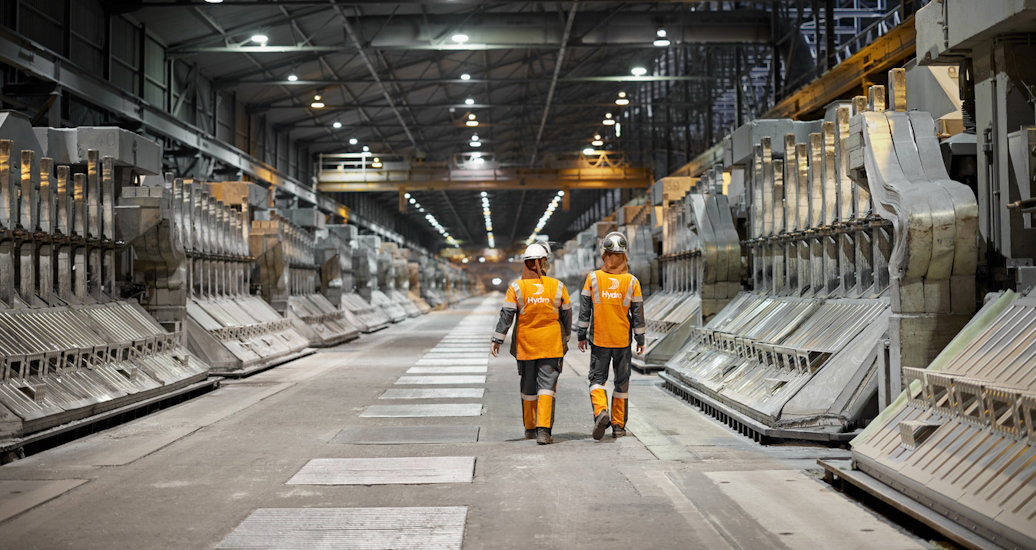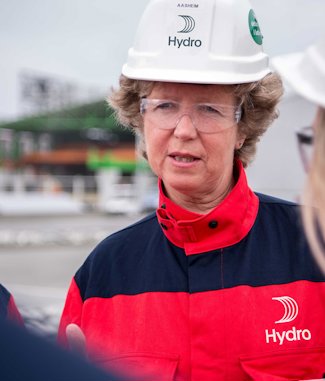🇳🇴 Disappointing Norwegian national budget for industry and power development
Press release from Hydro

The proposal for the national budget, presented by the Norwegian government on Friday, October 6, includes several elements that affect Hydro’s operations in Norway. The most significant impact is on the CO2 compensation scheme. Hydro is surprised and disappointed that the scheme is further weakened. The proposal for wind power taxation does not contribute to triggering sufficient investments to ensure an adequate supply of power for industry and the green transition.
The total impact of changes in the CO2 compensation scheme for Hydro in 2023, is estimated at a reduction of approximately NOK 1 billion. Hydro is concerned about the negative signaling effect the government’s constant changes have on the predictability of Norwegian industry.
“We are surprised and disappointed the government has once again chosen to weaken the competitiveness of the industry by cutting the established CO2 compensation scheme. This is unfortunate and it undermines the predictability of Norwegian industrial policy,” says President & CEO Hilde Merete Aasheim.

The purpose of the CO2 compensation scheme is to create a level playing field with other countries and prevent carbon leakage, which means energy intensive industries move production to countries with higher CO2 emissions.
The CO2 compensation scheme is part of the EU emissions trading system. The scheme partially compensates for the additional costs in energy expenses the industry incurs due to European CO2 prices affecting Norwegian energy prices. In Norway, Hydro utilizes 100 percent renewable energy that does not emit CO2 in its aluminum production.
In the 2024 state budget proposal, the government suggests a further weakening of the CO2 compensation scheme for the industry by nearly doubling the CO2 quota price floor from NOK 200 per tonne, which was introduced in 2022, to NOK 375 per tonne for 2023. The total impact on Hydro in 2023 is estimated to be approximately NOK 1 billion. Consequently, Hydro must reverse parts of the previously calculated compensation for the first and second quarters of 2023 with roughly half of this amount, and record approximately corresponding lower amounts for the third and fourth quarters. The state budget will be discussed by the Norwegian Parliament during the autumn and the final budget decision is expected in December.
The quota price floor in the CO2 compensation scheme was first introduced in the 2023 state budget, and in the budget proposal presented in the autumn of 2022, the government stated the CO2 compensation scheme was now ‘sustainable in a time of tighter economic constraints.’ The government was also supposed to invite the industry to a dialogue on how the scheme should be further developed. This has been the basis for Hydro’s provisions in the accounts for 2023 and for new investments the company is planning.
“The government presented a compensation level towards 2030 last year where they were clear the CO2 compensation scheme should remain unchanged. Therefore, it is unfortunate for the trust in political decisions that this is no longer the case and it is being changed once again at the first opportunity. It is also highly regrettable the government has not followed up on the process and the dialogue regarding the scheme as they promised the industry would be involved in,” says Aasheim.
“We are planning significant investments in new technology to cut CO2 emissions and create greener products the world needs. A robust and predictable CO2 compensation scheme is one of the most critical prerequisites for the industry to continue investing in Norway, enabling us to create value and employment based on renewable energy. The Norwegian Parliament should now come together and provide stability to the CO2 compensation scheme towards 2030, so the industry can regain the predictability essential for further industrial development,” says Aasheim.
The government proposes further changes in power taxation. The high-price contribution (høyprisbidraget) for hydropower is abolished from October 1, 2023. A basic rent tax of 35 percent is introduced for wind power, which is slightly less than the government’s original proposal of 40 percent and it is still not investment neutral. It is crucial for developers of new renewable energy and for the industry that the actual contract price is the basis for basic rent taxation (grunnrentebeskatning).
“The overall tax increases in the 2023 government budget created significant unpredictability and, at the same time, weakened the opportunity to develop wind and hydropower projects that Norway needs to achieve its climate goals. It is good the government is removing the high-price contribution from October 1. However, it is disappointing the government has not listened to the industry and the renewable energy sector, and addressed wind power taxation. The proposal for wind power taxation also does not contribute to triggering sufficient investments to ensure an adequate supply of power for industry and the green transition,” says Aasheim.
Originally published on 6 October.